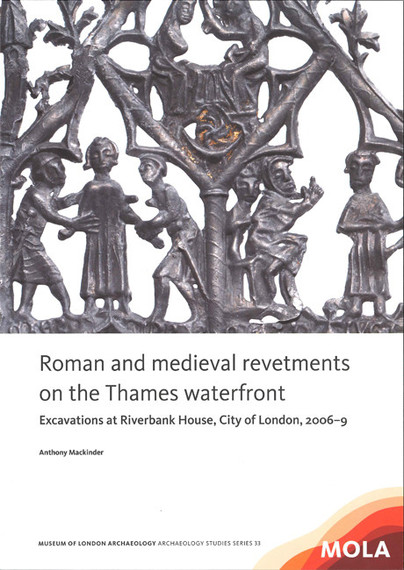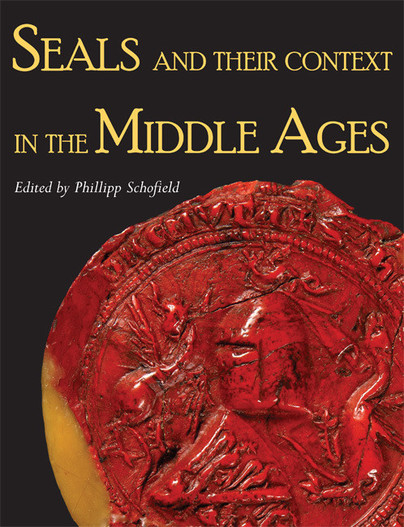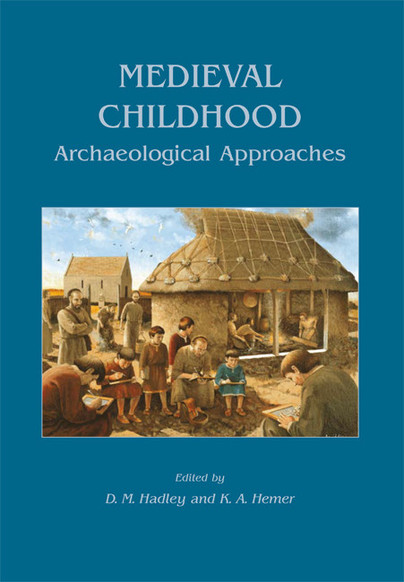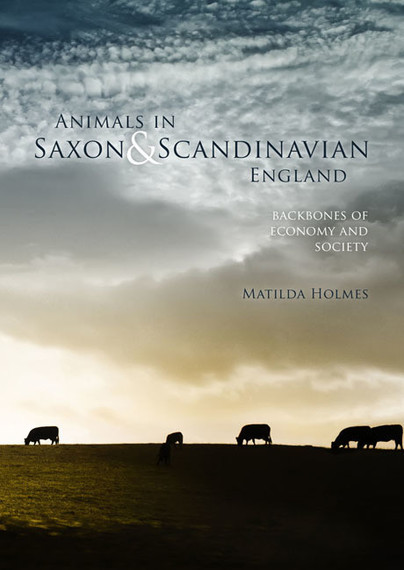
Format: Paperback
Pages: 80
ISBN: 9789490258108
Pub Date: 28 Feb 2015
Imprint: Karwansaray Publishers
Illustrations: 95
Description:
The 2014 Medieval Warfare Special issue is entirely dedicated - all 84 pages - to the Fall of Constantinople in 1453. It's like a normal issue, except it'll have more pages, more articles, more maps and more illustrations! Medieval Warfare Special 2014: 1453 - The Conquest of Constantinople with: - Eugenia Russel, Historical introduction – the destruction of the Oikoumeni - Kenneth Cline, Constantine XI – no room to maneuver - Murat Özveri, Mehmed ‘the Conqueror’ – A sultan of paradoxes - Nicola Bergamo, Venice, Genoa and Byzantium – difficult ‘trio' - Konstantin Nossov, The walls of Constantinople - Stephen Bennett & Nils Visser, The Conquest of Constantinople - Murray Dahm, Fallout – Contemporary reactions to the loss of Constantinople - Lukasz Rozycki, The fall of the Old World through the eyes of the “Polish janissary” - Raffaele D’Amato, The last defenders – the Roman army - Vassilis Pergalias, The final opponents – the Ottoman army - Ben Sheppard, Aftermath

Format: Paperback
Pages: 200
ISBN: 9781907588051
Pub Date: 05 Feb 2015
Series: East Anglian Archaeology Monograph
Description:
Botolph Bridge, now within urban Peterborough, lay beside an important crossing of the River Nene and once formed part of a well-known medieval vill, referenced in Domesday Book. Botolph Bridge was noted for its well preserved medieval earthworks but since the late 1980s these have gradually been destroyed by housing development. An earthwork survey carried out in 1982 amply demonstrated the complexity and importance of the site, showing a church and manorial complex with house plots strung out along an adjacent road and fields separated from the main settlement by a hollow way.
Excavation demonstrated that the manorial enclosure had replaced earlier house plots by c.1200. In the later 14th century, there was considerable investment by the manorial holders, the Draytons. A manorial farm was built above earlier fields, with stone buildings constructed around a courtyard including a farmhouse, dovecote and ancillary buildings. Within the manorial enclosure itself, further agricultural buildings were laid out. All these buildings had been abandoned by c.1600. The church, located just north of the excavation area, was finally demolished in 1695.

Format: Hardback
Pages: 300
ISBN: 9781907586286
Pub Date: 05 Feb 2015
Description:
The construction of a new shopping centre afforded MOLA the opportunity to investigate a 3.55ha site located between the north bank of the River Avon and the southern defences of Roman and later Bath. Extensive geoarchaeological work allowed the modelling and dating of the main stages in the evolution of this part of the Avon flood plain from at least the Late Devensian (23–11.
5ka BP). The pre-Holocene landforms can be related to the wider pattern of climate-driven landscape change. A very large lithic assemblage points to task-based activities on or immediately adjacent to the site in the Early and Late Mesolithic, but analysis indicates that the recovered scatters have been subject to post-depositional processes. Little evidence for the use of the flood plain in the Roman period was recovered, but the outer defences of the Anglo-Saxon burh were investigated and extramural activity of rural and perhaps popular religious character recorded. Following the Norman Conquest, major landscape reorganisation took place, with extensive quarrying, the construction of the earliest southern road out of the city, the laying out of burgage plots and creation of an artificial watercourse to serve as a mill race and perhaps flood defence. Occupation in the southern suburb is well represented from the mid 13th century and its character and development is reconstructed in a sequence terminating in two destructive events of the 20th century – the air raids of 1942 and the construction of the first Southgate shopping centre in the 1970s.

Format: Paperback
Pages: 60
ISBN: 9781907372940
Pub Date: 04 Feb 2015
Imprint: Paul Holberton Publishing
Illustrations: 40 colour illus.
Description:
Accompanying a focused display at The Courtauld Gallery that will bring together for the first time Pieter Bruegel the Elder’s only three known grisaille paintings – the Courtauld’s Christ and the Woman Taken in Adultery (which is barred from travel), The Death of the Virgin from Upton House in Warwickshire (National Trust) and Three Soldiers from the Frick Collection in New York – this book will examine the sources, function and reception of these three exquisite masterpieces. The panels will be complemented by prints and contemporary replicas, as well by other independent grisailles in order to shed light on the development of this genre in Northern Europe.Despite his status as the seminal Netherlandish painter of the 16th century, Pieter Bruegel the Elder (c.
1525–1569) remains an elusive artist: fewer than forty paintings are ascribed to him. Of these, a dozen are cabinet-sized. These small-scale works offer key insights as they often bear a personal significance for the artist and were sometimes given as gifts to friends and patrons. Presenting these works together for the first time is not only an extraordinary and unprecedented opportunity but it will be extremely revealing, considering their unusual nature in both Bruegel’s oeuvre and 16th-century art in general. Monochrome painting in shades of grey was a mainstay of Netherlandish art from the early 15th century, most often present on the wings of altarpieces and preparatory sketches for engravings. In contrast, Bruegel’s panels constitute one of the earliest and rare examples of independent cabinet pictures in grisaille, created for private contemplation and enjoyment. This seemingly austere type of painting has often been imbued with religious or political significance. On a purely artistic level, it enabled the painter to showcase his skill by limiting his palette. The publication, which includes a technical investigation of the three panels, will provide the opportunity to reassess the practical aspects of the grisaille technique and the many ways in which this effect was achieved. Indeed, Bruegel’s three monochromatic paintings display quite different techniques, raising the question of the painter’s intent. This is the latest in the series of books accompanying critically acclaimed Courtauld Gallery displays, following on from Collecting Gauguin (2013), Antiquity Unleashed (2013), Richard Serra (2013), A Dialogue with Nature (2014), Bruegel to Freud (2014) and Jonathan Richardson (2015).

Format: Paperback
Pages: 137
ISBN: 9781907586309
Pub Date: 02 Feb 2015
Description:
Archaeological investigations were carried out in 2006–9 on the north bank of the River Thames at Riverbank House, City of London, just upstream of the modern London Bridge and its medieval predecessor, in the heart of the medieval port. An extensive watching brief had taken place on the site in the early 1980s (the Swan Lane car park), but these new excavations were in undisturbed areas around the perimeter. A 2nd-century AD revetment and part of the late Roman riverside wall were recorded, while a sequence of timber revetments, some dated by dendrochronology, witness the growth of the medieval port from the 12th to the 15th centuries.
Fragmentary building remains relate to medieval and post-medieval tenements, and pipes from a 16th- or 17th-century ship’s pump were found reused as a drain. Characteristically, foreshore deposits and reclamation dumps infilling the medieval waterfronts produced many well-preserved finds, particularly leather and metal objects. The latter include tools, domestic items, cloth seals and a number of religious and secular badges. A rare and unusual find was a devotional openwork panel relating to the life and death of Thomas, Earl of Lancaster, who was executed on 23 March 1322 by Edward II. Remains of plants used in dyeing support the documented importance of the local cloth-finishing industry.

Format: Hardback
Pages: 378
ISBN: 9788785180537
Pub Date: 22 Jan 2015
Series: Ships & Boats of the North
Illustrations: 240 illustrations
Description:
“A wealthy man in Denmark, citizen of the town of Schleswig, built a large ship at great expense. And the king of the country decided to join company and take part in the profits. And after he had made good half of the costs, he owned a corresponding part of the ship …”The medieval Hanseatic merchants are famous for their maritime trade network, which extended across Northern Europe from the 13th century onward.
The rare quote above sheds light on a less known period, beginning in the late Viking Age, when large, elegant cargo ships were built and sailed across the sea by Scandinavian merchants.This volume presents the earliest archaeological evidence for specialised merchant seafaring in Danish waters. The cargo ship-finds of Eltang Vig, Lynæs, Karschau and Haderslev are explored in detail in order to illuminate the technology and style of a dynamic age of maritime enterprise and cultural transformation.

Format: Hardback
Pages: 208
ISBN: 9781782978176
Pub Date: 08 Jan 2015
Illustrations: b/w and colour illustrations
Description:
Seals and their Context in the Middle Ages offers an extensive overview of approaches to and the potential of sigillography, as well as introducing a wider readership to the range, interest and artistry of medieval seals. Seals were used throughout medieval society in a wide range of contexts: royal, governmental, ecclesiastical, legal, in trade and commerce and on an individual and personal level. The fourteen papers presented here, which originate from a conference held in Aberystwyth in April 2012, focus primarily on British material but there is also useful reference to continental Europe.
The volume is divided into three sections looking at the history and use of seals as symbols and representations of power and prestige in a variety of institutional, dynastic and individual contexts, their role in law and legal practice, and aspects of their manufacture, sources and artistic attributes. Importantly and distinctively, the volume moves beyond the study of high status seals to consider such themes as the social and economic status of seal-makers, the nature and meaning – including reflections of deliberate wit and boastfulness – of specific motifs employed at various levels of society, and the distribution of seals in relation to the location of, for instance, religious institutions and along major routeways. In so doing, it sets out ways in which sigillography can open new pathways into the study of non-elites and their cultures in medieval society.

Format: Paperback
Pages: 468
ISBN: 9789088902253
Pub Date: 31 Dec 2014
Description:
This books present papers on the archaeology of the region between the river Meuse and the city of Oss (Netherlands), locally known as the "Maaskant". The papers presented in this volume discuss the period from 3000 BC until 1500 AD. The wealth of archaeological data from this region indicated this part of the Netherlands was inhabited by early farmers already 5000 years ago.
The strategic location near the river did not only provide fertile grounds but also formed an intersection in transport and communication routes.

Format: Hardback
Pages: 964
ISBN: 9781891271205
Pub Date: 08 Dec 2014
Imprint: Celtic Studies Publications
Description:
What awaits us beyond the grave is perhaps the fundamental human mystery. Visionary accounts of the afterlife are attested long before the Common Era, and loomed large in the imaginative universe of early Christianity. The medieval Irish inherited and further transformed this tradition, producing vivid eschatological narratives which had a profound impact throughout Europe as well as being works of remarkable literary and spiritual power in their own right.
Under the headings ‘Soul and Body’, ‘The Seven Heavens’, ‘The Next World’, and ‘The Judgement and its Signs’, this book presents critical editions, with translation and commentary, of 26 eschatological texts from the Old, Middle, and Early Modern Irish periods, together with related material in Latin and Old English. Some of these works are here edited for the first time. Extended essays survey Irish eschatological literature a whole, and place it in its wider context; and the volume concludes with a comprehensive handlist of Irish eschatological compositions. This book consists of two volumes.

Format: Paperback
Pages: 160
ISBN: 9781782976981
Pub Date: 02 Dec 2014
Illustrations: b/w and colour illustrations
Description:
The nine papers presented here set out to broaden the recent focus of archaeological evidence for medieval children and childhood and to offer new ways of exploring their lives and experiences. The everyday use of space and changes in the layout of buildings are examined, in order to reveal how these impacted upon the daily practices and tasks of household tasks relating to the upbringing of children. Aspects of work and play are explored: how, archaeologically, we can determine whether, and in what context, children played board and dice games?
How we may gain insights into the medieval countryside from the perspective of children and thus begin to understand the processes of reproduction of particular aspects of medieval society and the spaces where children’s activities occurred; and the possible role of children in the medieval pottery industry. Funerary aspects are considered: the burial of infants in early English Christian cemeteries the treatment and disposal of infants and children in the cremation ritual of early Anglo-Saxon England; and childhood, children and mobility in early medieval western Britain, especially Wales. The volume concludes with an exploration of what archaeologists can draw from other disciplines – historians, art historians, folklorists and literary scholars – and the approaches that they take to the study of childhood and thus the enhancement of our knowledge of medieval society in general.

Format: Paperback
Pages: 384
ISBN: 9781481175265
Pub Date: 17 Nov 2014
Imprint: Jules William Press
Series: Viking Language Old Norse Icelandic Series
Description:
Viking Language 2: The Old Norse Reader (the 2nd book in the Viking Language Series) immerses the learner in Old Norse and Icelandic. Readings include a wealth of Old Norse myths, legends, complete Icelandic sagas, poems of the Scandinavian gods, runic inscriptions. There is a large vocabulary and a full reference grammar.
Selections from Old Norse and rune texts range from the doom of the gods at the final battle Ragnarok to descriptions of the dwarves’ gold and the ring that inspired Tolkien’s Lord of the Rings, Wagner’s Ring Cycle, and a host of modern fantasy.

Format: Hardback
Pages: 302
ISBN: 9788771241792
Pub Date: 31 Oct 2014
Description:
Danish Medieval Castles is the first comprehensive overview in English of the castles and fortifications that are known from medieval Denmark. The book tells the story of who built the castles, when they did so, and why this happened. Over the past decades several castle buildings and earthworks have been examined, a few new archaeological sites have been found, and old excavations have been reopened.
All of this has resulted in new knowledge. The book also describes everyday life in Dansish castles in the Middle Ages, and examines the historic importance of the castles in times of peace and turbulence.

Format: Hardback
Pages: 400
ISBN: 9788771243130
Pub Date: 31 Oct 2014
Description:
The Middle Ages integrated the human senses and unified their media into a culture of saturated sensation. The saturated sensoriùm nurtured principles of perception and mediation permeated with paradox, intersensorial entanglement, and multimodal interchange. This book addresses medieval modes of multi- and intermediality in material as well as immaterial culture and cultural history.
It exemplifies the sensory and multisensory experiences sustained by medieval religion, art, archaeology, architecture, literature, liturgy, music, monasticism, miracles, cult, piety, love, eating, drinking, cognition, recollection, and burial. It ponders over perceptual practices performed as ritual, devotion, consumption (sacred or secular), memory, sanctity (in persons or percepts), church environment, sacramental imagery, romantic representation, and word-image-song-dance remediation. It illuminates the intertwined and compound character of the five Aristotelian categories of visus (sight), auditus (hearing), tactus (touch), olfactus (smell), and gustus (taste), showing that there was indeed far more to the senses and to sense experience than this classical categorisation might suggest. It aims to saturate our sense of medieval mediation beyond established modern and classical categories of communication.

Format: Hardback
Pages: 196
ISBN: 9781782977025
Pub Date: 27 Oct 2014
Illustrations: b/w and col. illustrations
Description:
Fifteen papers examine a variety of aspects of medieval towns and their topography. The first part of the volume comprises essays on the excavations in the Frankish emporium of Quentovic, directed by David Hill; London; Anglo-Saxon and Anglo-Scandinavian mints; the burhs of Somerset; and urban perspectives in literature. The second part concentrates on topographical subjects including an examination of the significance of the distribution through trade of Mayen Lava quernstones in early medieval north-west Europe and the evidence of a charter for the topography of late Anglo-Saxon Worcester which reveals that standing crosses were, by then, considered old fashioned.
Other papers consider landscape through place-name studies; long term archaeology projects in The Vale of Pickering, Yorkshire, and western Cheshire; medieval dykes; land holdings needed supporting the monasteries of Jarrow and Monkwearmouth; and aspects of mapping and the understanding of geographical space from Anglo-Saxon times and in the sixteenth to the twentieth centuries. The papers are preceded by a tribute to archaeologist and historian David Hill, and a bibliography of his publications.

Format: Paperback
Pages: 222
ISBN: 9789088902666
Pub Date: 22 Aug 2014
Description:
In this book an analysis of over 300 animal bone assemblages from English Saxon and Scandinavian sites is presented. The data set is summarised in extensive tables for use as comparanda for future archaeozoological studies.Animals in Saxon and Scandinavian England takes as its core four broad areas of analysis.
The first is an investigation of the diet of the population, and how food was used to establish social boundaries. Increasingly diverse diets are recognised, with high-status populations distinguishing themselves from other social sectors through the way food was redistributed and the diversity of taxa consumed.Secondly, the role of animals in the economy is considered, looking at how animal husbandry feeds into underlying modes of production throughout the Saxon period. From the largely self-sufficient early Saxon phase animal husbandry becomes more specialised to supply increasingly urban settlements. The ensuing third deliberation takes into account the foodways and interactions between producer and consumer sites, considering the distribution of food and raw materials between farm, table and craft worker. Fundamental changes in the nature of the Saxon economy distinguish a move away from food renders in the middle Saxon phase to market-based provisioning; opening the way for greater autonomy of supply and demand. Finally, the role of wics and burhs as centres of production is investigated, particularly the organisation of manufacture and provisioning with raw materials.

Format: Hardback
Pages: 240
ISBN: 9781782976127
Pub Date: 04 Jun 2014
Illustrations: b/w and col. illustrations
Description:
The Tribal Hidage, attributed to the 7th century, records the named groups and polities of early Anglo-Saxon England and the taxation tribute due from their lands and surpluses. Whilst providing some indication of relative wealth and its distribution, rather little can be deduced from the Hidage concerning the underlying economic and social realities of the communities documented. Sue Harrington and the late Martin Welch have adopted a new approach to these issues, based on archaeological information from 12,000 burials and 28,000 objects of the period AD 450–650.
The nature, distribution and spatial relationships of settlement and burial evidence are examined over time against a background of the productive capabilities of the environment in which they are set, the availability of raw materials, evidence for metalworking and other industrial/craft activities, and communication and trade routes. This has enabled the identification of central areas of wealth that influenced places around them. Key within this period was the influence of the Franks who may have driven economic exploitation by building on the pre-existing Roman infrastructure of the south-east. Frankish material culture was as widespread as that of the Kentish people, whose wealth is evident in many well-furnished graves, but more nuanced approaches to wealth distribution are apparent further to the West, perhaps due to ongoing interaction with communities who maintained an essentially ‘Romano-British’ way of life.
















